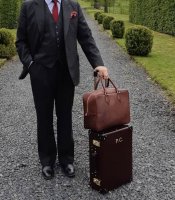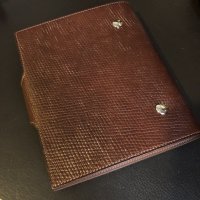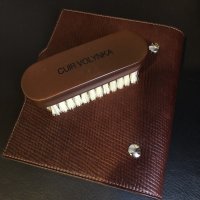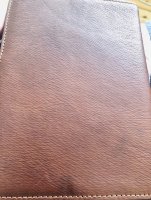Back in February 2020, Hermès published a second article about Volynka on their US site. I'm going to paste it here along with some pictures from the book
Cuir de Russie, mémoire du tan by Sophie Moquin. Italics and underline, my own
 Volynka Russia leather: in praise of a slower pace
Volynka Russia leather: in praise of a slower pace
In 1917, the Russian revolution swept away the old world order. Russia leather, traded with many countries, faded into obscurity. It is now being reborn in Hermès leather goods collections, with the name Volynka. This comeback is the fruit of five years of research carried out with a leather conservator-restorer and a British tanner.
The history and geography of vegetable tanning are important for those who want to unravel the mystery of the lozenge-shaped grain, the red-brown tone and the peated whisky scent of Russia leather. What is most fascinating is the incredible durability of this material from which princes’ trunks and soldiers’ boots were crafted during the era of the Russian tsars.

[Boots of Guillaume V d'Orange-Nassau,
Russia leather
Amsterdam, Rijksmuseum]
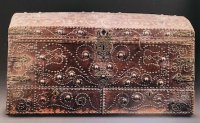
[James Parker, chest, 16th century, old Duchess Collection of Roxburghe
wood, brass, Russia leather
private collection]
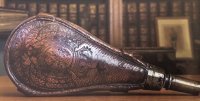
[Powder flask,
Louis XII period, France
Russia leather and brass,
Emile Hermès collection]
In particular, its waterproof quality is confirmed by the rolls found intact after spending two centuries under the sea in the hold of Metta Catharina, a shipwreck discovered off the coast of Plymouth. Hermès acquired part of this precious cargo in order to study it more closely, and in 2012 approached a leather conservator-restorer, Élise Blouet, and a British tanner, Andrew Parr.

[Hermès,
"Squelette boutonnière" watch made with Metta Catharina leather,
Conservatoire Hermès]

[Élise Blouet-Ménard]
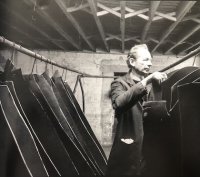
[Andrew Parr]
The company owned by the latter, J. & J. F. Baker, established in Devon in 1862, is the last remaining tannery in England to treat hides with oak bark. The local varieties used are almost exactly the same as those gathered in the Moscow region, the birthplace of the legendary Russia leather, where birch and willow also grow. The tanning time allowed by the Parr family, a principle that has remained unchanged for five generations, has also proved to be key in turning back the clock.
It takes approximately one year to produce a hard-wearing leather using vegetable tannin; the acceleration of this natural cycle using modern processes (mechanical or thermal) will alter the structure of the hides. This slow method may no longer be commonplace, but it was standard practice in the 19th century, right up until the empire of the tsars.
At its own pace, surrounded by Devon’s oak woodlands, the tannery has succeeded in recreating all the properties of Russia leather for Hermès. The bark dries out in a warehouse for three years before being ground in the bark mill. The hides come from farms located within a radius of around sixty miles of the tannery. Suspended on wooden sticks and then layered in tanning pits, they soak for eight months in bark liquors until they take on a warm brown shade.

[Tanning pits
J&FJ Baker & Co]
The artisans then finish them by hand with a nourishing balm, some ingredients of which come from Russia.
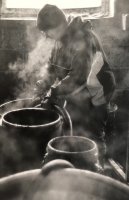
[Nourishing balm preparation
J&FJ Baker & Co]
The memory of the tan of the tsars is now safely kept alive. The objects in the Volynka line launched in 2018 as part of the Spring-Summer collection - a Ulysse notebook and three bags (Bolide voyage, Plume voyage and Haut à courroies) - make sure of this.









